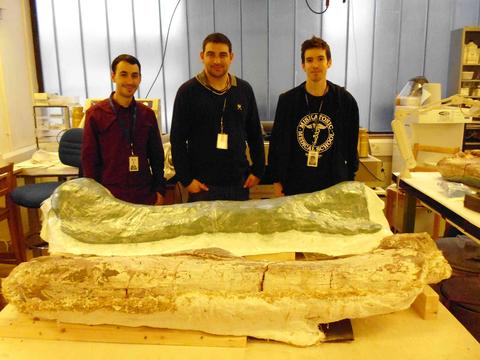We're going to need a bigger box....
Pictured: the contents of ‘loose bones’ bag 1. Not shown: the same again from ‘loose bones’ bag 2….
Pictured: the contents of ‘loose bones’ bag 1. Not shown: the same again from ‘loose bones’ bag 2….
Not much activity on this blog but lots in the lab. We’ve been very busy….
The Niger Sauropod project is nearly at an end! We’ve fully prepared all the bones that were wrapped in plaster jackets, and have moved onto the ‘float bags’. ‘Float’ is the term given to the fossils which are found loose on the surface, rather than being buried in the rock. We had a wealth of float material to work through, but most of this is done now, with just two large bags remaining (simply labelled ‘bones’).
Continuing on where we left off last time, this post will attempt to cover how we make a protective support jacket for very large or heavy specimens.
For really weighty specimens, like our dinosaur’s limb bones, we create a sort of supportive shell for the bone from a substance called Epopast, an epoxy resin/glass fibre paste. Epopast is pretty nasty stuff so to mix up a batch we need to get kitted out in full PPE (personal protective equipment)- goggles, mask, lab coat, apron, gloves and gauntlets (arm guards).
Firstly, apologies for the lack of updates recently- I blame Christmas. Secondly, for those that don’t know, these blog posts are longer than they look! Click ‘read more’ for the full post.

The current volunteer fossil prep team (left to right, Matthew, Craig and Kieran) with sauropod limb bones. Photo by Mark Graham
